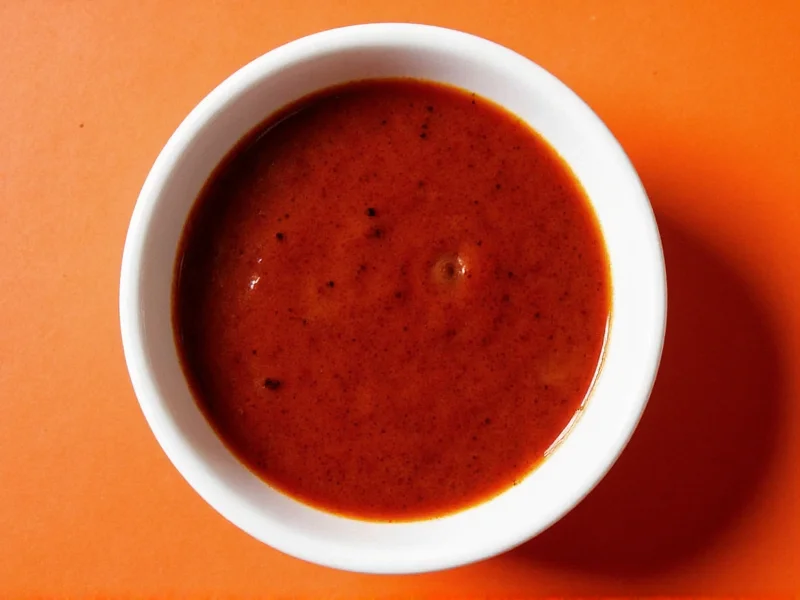Many home cooks searching for substitute for adobe sauce are actually looking for alternatives to adobo sauce—a frequent misspelling due to Adobe software's popularity. Understanding this distinction is crucial for finding effective replacements in your cooking. Authentic adobo sauce features a balanced combination of soy sauce, vinegar, garlic, and sometimes peppercorns, creating the foundational flavor for Filipino adobo dishes and various Hispanic recipes.
What Makes Adobo Sauce Unique
True adobo sauce isn't a single bottled product but rather a cooking technique and flavor profile originating from both Filipino and Spanish culinary traditions. The Filipino version typically uses soy sauce, vinegar, garlic, and black pepper, while the Spanish version often features paprika, oregano, and vinegar. When seeking an adobo sauce replacement for chicken recipes or other proteins, you're essentially trying to replicate this specific salty-tangy-garlicky balance.
Top 5 Practical Substitutes for Adobo Sauce
When you need an immediate substitute when out of adobo sauce, these options deliver the closest flavor profile with common pantry ingredients:
| Substitute | Ratio | Best For | Flavor Notes |
|---|---|---|---|
| Soy sauce + vinegar + garlic | 1:1:1 | Traditional Filipino adobo | Closet match to authentic flavor; adjust vinegar for tanginess |
| Worcestershire sauce + vinegar | 2:1 | Quick marinades | Adds umami depth; reduce salt in recipe |
| Miso paste + vinegar + water | 1:1:1 | Gluten-free needs | Richer umami; white miso works best |
| Liquid aminos + apple cider vinegar | 2:1 | Health-conscious cooking | Milder saltiness; good for sensitive palates |
| Adobo seasoning + vinegar | 1 tbsp + 2 tbsp | Authentic flavor shortcut | Use Goya or Badia brands for reliable results |
Creating Your Own Adobo Sauce Substitute
For the most reliable homemade adobo sauce alternative, combine these elements in a small bowl:
- 2 tablespoons soy sauce (or tamari for gluten-free)
- 2 tablespoons vinegar (cane, rice, or apple cider)
- 3 cloves garlic, minced
- 1 teaspoon black pepper
- 1 bay leaf (optional but recommended)
Mix thoroughly and let sit for 15 minutes to allow flavors to meld. This basic adobo sauce substitute for pork recipes works equally well for chicken, tofu, or vegetables. For a thicker consistency similar to some bottled versions, simmer the mixture for 5-7 minutes.
Specialized Substitutions for Dietary Needs
When accommodating specific dietary requirements, these adobo sauce replacements for special diets maintain authentic flavor while meeting restrictions:
- Gluten-free option: Use tamari instead of soy sauce and verify vinegar is gluten-free
- Soy-free alternative: Combine coconut aminos with red wine vinegar and garlic
- Low-sodium version: Use low-sodium soy sauce and increase garlic proportion
- Vegan Worcestershire: Choose Annie's or The Wizard's brand for plant-based umami
Avoiding Common Substitution Mistakes
Many cooks make these errors when searching for an adobo sauce substitute without soy sauce:
- Using only soy sauce: Missing the critical vinegar component creates unbalanced flavor
- Incorrect vinegar ratios: Too much vinegar overwhelms; start with 1:1 ratio and adjust
- Skipping garlic: Garlic is essential to authentic adobo flavor profile
- Over-salting: Many substitutes already contain salt; taste before adding extra
Remember that the best quick adobo sauce replacement for weeknight meals depends on your available ingredients and the specific dish you're preparing. For slow-cooked dishes, you can be more generous with the substitute, while quick-seared proteins require more precise balancing.











 浙公网安备
33010002000092号
浙公网安备
33010002000092号 浙B2-20120091-4
浙B2-20120091-4